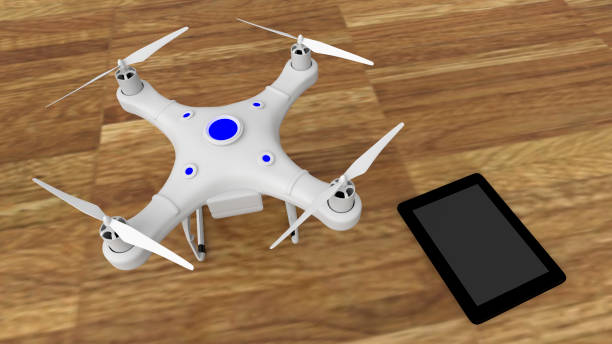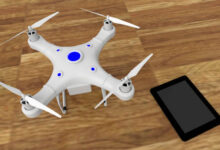How To Develop AI Models for Autonomous Drones

Autonomous drones are the future. They can be used for a variety of purposes, such as delivery, inspection, and mapping.
But in order for autonomous drones to be safe and effective, they need to be equipped with AI models that can help them to navigate their environment, avoid obstacles, and make decisions.
In this guide, we will walk you through step by step procedure on how to develop AI models for autonomous drones.
How to develop AI models for autonomous drones

ResearchGate says developing AI models for autonomous drones is a complex task, but it is possible with the right tools and resources. Here are a few steps you can follow:
- Identify your needs. What do you want your autonomous drone to be able to do? Once you have identified your needs, you can start to think about the type of AI model you need to develop.
- Collect data. AI models are trained on data, so you will need to collect a large dataset of images and sensor data from your autonomous drone. This data can be used to train the AI model to identify objects, avoid obstacles, and make decisions.
- Choose a development platform. There are a number of different development platforms available for developing AI models for autonomous drones. Choose a platform that is right for your needs and skills.
- Train your AI model. Once you have chosen a development platform, you can start to train your AI model. This process can take several days or weeks, depending on the size and complexity of your model.
- Test and deploy your AI model. Once your AI model is trained, you need to test it to make sure that it is accurate and reliable. Once you are satisfied with the performance of your model, you can deploy it to your autonomous drone.
Here are some additional tips for developing AI models for autonomous drones:
- Use a variety of data. The more data you have, the better your AI model will be. Try to collect data from different environments and under different conditions.
- Use a powerful computer. Training AI models can be computationally expensive. If you have a large dataset, you will need to use a powerful computer to train your model.
- Use a cloud-based platform. Cloud-based platforms can provide you with the computing power and storage you need to train and deploy your AI model.
- Get help from experts. If you are new to AI, you may want to get help from experts who can help you to develop and deploy your AI model.
Examples of how AI models are being used in autonomous drones
Here are some examples of how AI models are being used in autonomous drones:
- Object detection: AI models can be used to detect objects in the path of an autonomous drone. This can help the drone to avoid obstacles and navigate its environment safely.
- Obstacle avoidance: AI models can be used to help an autonomous drone to avoid obstacles. Medium says this can help to prevent the drone from crashing and damaging itself or property.
- Decision making: AI models can be used to help an autonomous drone make decisions. For example, an AI model could be used to help a delivery drone to decide which route to take or where to land.
FAQs about How to develop AI models for autonomous drones
Alright my lovely readers, now it is time for us to look into the most frequently asked questions about How to develop AI models for autonomous drones.
What are the benefits of using AI models for autonomous drones?
AI models can provide a number of benefits for autonomous drones, including:
- Improved safety: AI models can help autonomous drones to avoid obstacles and navigate their environment safely.
- Increased efficiency: AI models can help autonomous drones to make decisions more quickly and efficiently.
- Reduced costs: AI models can help to reduce the cost of operating and maintaining autonomous drones.
What are some of the challenges of developing AI models for autonomous drones?
Some of the challenges of developing AI models for autonomous drones include:
- Data collection: Collecting a large and diverse dataset of images and sensor data can be difficult and expensive.
- Model training: Training AI models can be computationally expensive and time-consuming.
- Model testing and deployment: Testing and deploying AI models on autonomous drones can be challenging, as the models need to be able to operate in a variety of environments and conditions.
What are some of the best practices for developing AI models for autonomous drones?
Here are some of the best practices for developing AI models for autonomous drones:
- Use a variety of data: The more data you have, the better your AI model will be. Try to collect data from different environments and under different conditions.
- Use a powerful computer: Training AI models can be computationally expensive. If you have a large dataset, you will need to use a powerful computer to train your model.
- Use a cloud-based platform: Cloud-based platforms can provide you with the computing power and storage you need to train and deploy your AI model.
- Get help from experts: If you are new to AI, you may want to get help from experts who can help you to develop and deploy your AI model.
- Start small: Don’t try to develop a complex AI model right away. Start with a simple model and gradually add complexity as you learn more.
- Test and iterate: Once you have trained your AI model, it is important to test it thoroughly and make adjustments as needed. This process of testing and iteration is essential for developing a safe and reliable AI model.
What are some of the ethical considerations that should be taken into account when developing AI models for autonomous drones?
There are a number of ethical considerations that should be taken into account when developing AI models for autonomous drones, such as:
- Privacy: AI models can collect a lot of data about people and their environment. It is important to use this data responsibly and to protect the privacy of individuals.
- Safety: AI models need to be safe and reliable. If an AI model makes a mistake, it could have serious consequences. It is important to test and validate AI models thoroughly before deploying them.
- Accountability: It is important to be able to hold AI models accountable for their actions. This means being able to understand how the model works and to be able to identify and fix any problems.
Conclusion
Developing AI models for autonomous drones is a challenging but rewarding task. By following the tips and best practices above, you can develop AI models that can help to make autonomous drones safer, more efficient, and more reliable.
I believe that it is important to develop AI models for autonomous drones in a responsible and ethical way.
We need to ensure that AI models are used to protect people’s privacy and safety. We also need to be able to hold AI models accountable for their actions.
I encourage anyone who is developing AI models for autonomous drones to consider the ethical implications of their work. We need to make sure that AI is used for good and not for harm.
Thanks for reading. Please if you have any question about How to develop AI models for autonomous drones, kindly drop it in the comment section below.








